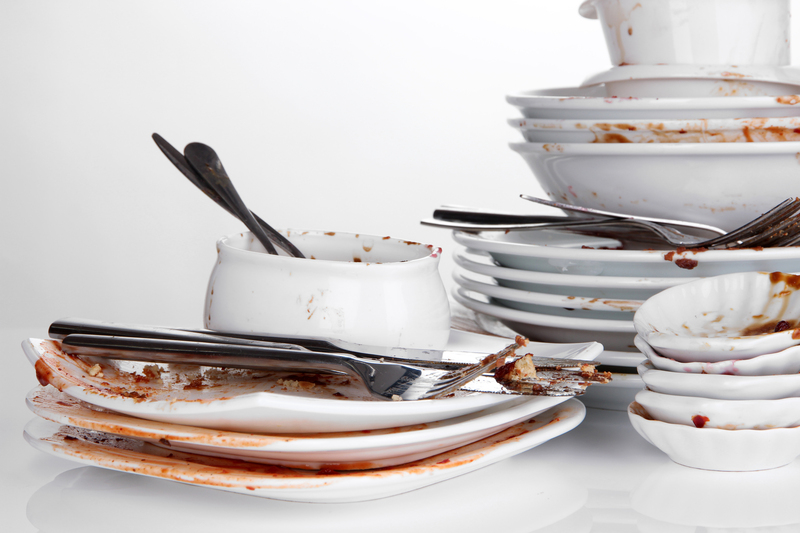How Steam Cleaning Impacts Leather Sofas
Posted on 18/05/2025
How Steam Cleaning Impacts Leather Sofas: A Comprehensive Guide
Leather sofas are timeless pieces in many homes, loved for their elegance, durability, and comfort. However, maintaining that luxurious look can be challenging--especially when it comes to deep cleaning. With the increasing popularity of steam cleaning, many homeowners wonder: Is steam cleaning safe for leather sofas? How does steam cleaning affect leather upholstery, and what are the best practices for keeping leather furniture in pristine condition?

Understanding Leather Sofa Material
Before delving into the effects of steam cleaning on leather sofas, it's essential to understand the nature of leather. Leather is a natural material derived from animal hides, treated and processed to produce a smooth, durable surface. There are different types of leather used in sofa manufacturing, including:
- Full-grain leather - the most durable and natural, retaining the hide's original markings.
- Top-grain leather - sanded and refinished for a smoother texture.
- Corrected-grain leather - heavily finished to hide imperfections.
- Bonded leather - made from leftover leather scraps bonded together.
Each type has unique cleaning requirements and reacts differently to cleaning methods. Full-grain and top-grain leathers are more resilient, while bonded leather is more sensitive.
How Steam Cleaning Works
Steam cleaning utilizes hot vaporized water to dislodge dirt, bacteria, allergens, and stains. It is a common method for deep cleaning carpets, fabrics, and even certain upholstery. The high temperature and moisture work together to sanitize surfaces without the need for harsh chemicals.
Benefits of Steam Cleaning
- Eco-friendly: No harsh chemicals are required, making it safer for people and pets.
- Effective: Penetrates surface pores to remove grime, dust mites, and bacteria.
- Quick drying: Surfaces dry faster compared to traditional water-based cleaning.
Can You Steam Clean Leather Sofas?
The impact of steam cleaning on leather sofas is a widely debated topic. While some upholstery manufacturers and professionals recommend against it, others claim that--when done correctly--steam cleaning can be both safe and effective for leather surfaces.
Potential Benefits of Steam Cleaning Leather Sofas
- Sanitization: The high temperature kills bacteria and dust mites, helping maintain a healthy environment.
- Stain Removal: Can help lift soil and certain types of stains from the leather surface.
- Allergen Removal: Extraction of dust and allergens from seams and stitching.
- No Chemical Residue: Eliminates the risk of chemical reactions damaging the leather.
Risks and Drawbacks of Steam Cleaning Leather Upholstery
- Moisture Penetration: Leather is porous. Excess steam can seep into the material, causing warping or stretching.
- Drying Out and Cracking: High heat and moisture may strip natural oils, leading to stiffness and cracking.
- Discoloration: Intense heat can fade the dye or finish, creating uneven patches.
- Delamination: In bonded or faux leather, steam may weaken adhesives causing layers to separate.
Expert Opinions: Steam Cleaning and Leather Care
Most leather care experts advise caution when considering steam cleaning for leather furniture. The consensus is:
- Steam cleaning is not generally recommended for leather sofas, especially for delicate or untreated leathers.
- If attempted, it should only be performed using a steam cleaner with an upholstery attachment, on the lowest heat setting, and for a very short duration.
- Always perform a small patch test in an inconspicuous area before steaming the whole sofa.
Leather care professionals typically suggest regular dusting and gentle cleaning with a leather-specific cleaner and conditioner rather than steam.
Step-by-Step Guide: Safely Cleaning Leather Sofas
If you're looking for the best way to clean a leather sofa, consider the steps below to protect your investment:
1. Vacuum Thoroughly
- Use a soft brush attachment to remove dust and debris from the sofa's surface, seams, and crevices.
2. Wipe With a Damp Cloth
- Using a slightly damp microfiber cloth (not wet), gently wipe down the leather.
- Never saturate the leather with water.
3. Use a Leather Cleaner
- Choose a pH-balanced cleaner designed for leather.
- Apply it per instructions, usually with a soft cloth, working in small sections.
4. Condition the Leather
- Once completely dry, apply a leather conditioner to restore lost oils and maintain flexibility.
- Conditioning prevents cracking and drying out.
5. Dealing with Tough Stains
- For tough stains, such as grease or ink, consult a professional or use specialty leather stain removers.
- Always do a patch test to avoid damage.
When Is Steam Cleaning Appropriate for Leather Sofas?
Sometimes, steam cleaning might be considered--as in cases of deep-set bacteria, mild mold, or severe allergies. However, you should never direct steam directly onto leather surfaces. Instead:
- Use the steam cleaner only on the seams, stitching, or hard-to-reach areas where dust and allergens may accumulate.
- Cover the steam nozzle with a microfiber cloth to soften the heat and moisture.
- Keep the steam moving and never hold it in one spot for more than a few seconds.
If in doubt, always contact a leather cleaning professional with expertise in both leather and steam cleaning technology.
Myths and Facts About Steam Cleaning Leather Couches
- Myth: Steam cleaning is always safe for leather sofas.
Fact: Steam can damage leather by stripping natural oils and causing shrinkage or cracking. - Myth: Steam cleaning is the most effective way to disinfect leather.
Fact: Gentle, non-abrasive leather cleaners can sanitize without heat damage. - Myth: All types of leather respond the same to steam.
Fact: Full-grain, top-grain, and bonded leathers have vastly different tolerances to moisture and heat.
Manufacturer Warranties and Steam Cleaning
Most leather sofa warranties specify "do not use steam or water-based cleaning methods." Using steam or excessive moisture often voids the warranty and may limit your options for repairs or replacements. Always read your care label and warranty terms before attempting any intensive cleaning process on your sofa.
Alternative Deep Cleaning Methods for Leather Sofas
If steam cleaning isn't recommended or you're concerned about damaging your leather couch, consider these safe alternatives:
- Professional Leather Cleaning Services: Trained technicians use specialized products and methods safe for your type of leather.
- Dry Cleaning Kits: These use cleaning powders or foams that absorb grime without saturating the leather.
- Leather Wipes: Convenient for spot cleaning and ongoing maintenance.
- Home Remedies (with Caution): A solution of distilled water and white vinegar (half-and-half) applied gently with a microfiber cloth can tackle mild dirt.
Best Practices for Preserving Your Leather Sofa
- Regular Cleaning: Weekly dusting and monthly cleaning keep leather looking supple and new.
- Condition Frequently: Apply leather conditioner every 6-12 months, depending on use and climate.
- Avoid Direct Sunlight: Sun fades and dries the leather, leading to premature aging.
- Keep Away from Heat Sources: Radiators and fireplaces can cause irreversible cracking in leather.
- Address Spills Quickly: Blot--not rub--immediately, and avoid harsh chemicals.
- Rotate Cushions: Even out wear so one spot doesn't become dull or misshapen.
Frequently Asked Questions About Steam Cleaning Leather Sofas
Can steam cleaning ruin my leather couch?
Yes, improper steam cleaning can damage leather sofas. Too much heat or moisture may cause dryness, cracking, shrinkage, or discoloration. Always consult your sofa's care label and, if necessary, hire a professional.
Is any kind of leather sofa safe to steam clean?
Generally, no type of leather is completely safe for traditional steam cleaning. Some synthetic leathers and high-density treated leathers may withstand brief exposure, but it's always risky. Patch test and use extreme care.
If I decide to steam clean, how can I minimize the risk?
- Use a low-temperature setting and a covered nozzle.
- Limit steam exposure to seams and hard-to-reach areas--not main leather surfaces.
- Dry the sofa immediately using a clean, absorbent towel.
- Condition the leather after cleaning to replenish lost oils.
How often should I clean and condition my leather couch?
For the best results, dust weekly, clean gently monthly, and condition twice a year (or more often in dry climates).
What is the safest way to clean a leather sofa?
Use a microfiber cloth, a leather-specific cleaner, and regularly condition the leather to maintain its beauty. Avoid harsh chemicals, abrasive tools, and water saturation.

Conclusion: Weighing the Impact of Steam Cleaning on Leather Sofas
While steam cleaning is a popular method for deep cleaning many household textiles, its potential drawbacks outweigh its benefits for leather sofas. The heat and moisture from steam can cause irreparable damage, including:
- Drying, cracking, or shrinking the leather surface
- Discoloration and loss of finish
- Warranties rendered void by inappropriate cleaning methods
For ongoing beauty and longevity, stick to recommended leather cleaning products and procedures. Reserve steam cleaning for pet allergies or mold only when nothing else works--and always consult the experts first. Your leather sofa is an investment; show it the care it deserves, and it will reward you for years to come.





